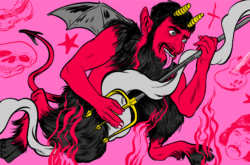Historically, the ability to read sheet music has been essential for composing, performing, and analyzing Western music.
The rise in popularity of alternative notations such as MIDI and tablature has changed this notion, allowing notation to be more idiomatic for musicians across different walks. That said, staff notation / sheet music still remains as a universal standard, a common language that can be shared between any two musicians.
For this reason, even if you produce great music using solely samples and MIDI, it never hurts to be able to read sheet music – after all, one day you might have to transcribe a piano part to have it recorded by a pianist, and you wouldn’t want to have to learn for the first time then! In this article, we’ll provide a series of tips, tricks, and mnemonic devices that allow you to quickly identify some key aspects of a piece of sheet music. More specifically, we’ll examine three ‘cheat codes’ that have the potential to be game-changers for everyone from absolute beginners to seasoned sheet music readers.
1. A sheet music ‘cheat code’ for beginners: How to easily identify pitches on common staves
If you’re an absolute beginner at reading sheet music, one of the first things you need to learn is how pitches are organized on a staff. If you’re a producer or guitarist, you’re likely to be already familiar with the names of pitches (C, G, F#, Db, etc). However, identifying them on the staff might take you a second – here’s a trick that can help speed things up for you:
FACE


As you can see, the white spaces on the treble clef conveniently spell out the word, “FACE” (with bass clef, the position of FACE simply drops down by a space on the staff). This trick is helpful for anyone first starting out because with it, any pitch you need to identify on the staff is at most a letter away. If you know where A and C are on the staff, then you can quickly identify that the pitch on the line between them is a B. If you see a pitch below the space you know is E, then it’s a D – it’s that simple.


Of course, the ultimate goal is to be able to identify a pitch immediately without thinking of the pitches that surround it, but this is a great trick to hit the ground running.
2. A ‘cheat code’ for intermediate musicians: How to easily identify the key from a key signature
Once you’re able to read basic pitches and rhythms, the next step to sheet music fluency is identifying the key by looking at a key signature. When first approaching this, you might think it’s just a matter of rote learning. However, there’s actually a trick to easily deciphering a key, just by taking a glance at its key signature. The technique differs between keys with sharps and keys with flats, so let’s look at them separately.
How to identify keys with sharps
To easily identify a key with sharps, we’re going to look at the rightmost sharp symbol noted in the key signature. Let’s start with this key, which only has one sharp:

Using FACE, we can identify that the sole sharp for this key is applied to the pitch of F, causing it to become an F#. To identify the major key, we simply raise this pitch by a half step – therefore, this key signature represents the key of G major.
Now it’s your turn: what key is denoted by the following key signature?

If you said B major, you’re absolutely correct! Remember, all we have to do is look at the rightmost sharp symbol – we can ignore all of the other sharps. The rightmost sharp is A#, which we raise by a half step to get our answer, B. As you may have realized, the rightmost sharp symbol happens to always be the leading tone in the key.
How to identify keys with flats
Keys with flats have a similar trick, but it’s not exactly the same – instead, we’re going to look one flat left to the rightmost flat… and that’s it! There’s no need to raise the pitch like we did for sharps. Rather, the second-to-rightmost flat directly corresponds to our major key.
For example, let’s look at this key:

The rightmost flat is Eb, and the flat immediately to the left of it is Bb. Therefore, our key is Bb major. Not too hard, right?
We quickly see that an ostensibly ‘complicated’ key really isn’t that complicated:

Applying the exact same rule, we can immediately identify that this key is Cb major.
The only caveat to this trick is that we need to know that the key with one flat is F major, since there’s no second-to-rightmost flat that we can rely on.
3. A ‘cheat code’ for advanced musicians: How to easily notate any key signature
While our previous trick covers recognition, recall generally tends to be a harder task. For example, we were just able to identify the key of Cb major by looking at the key signature. However, what if we had to write out the same key signature ourselves, given only the name of the key? This could pose more of a challenge because for recognition, we ignored all of the other accidentals aside from the one that was meaningful to us.
Let’s overview a practical method to go about this task, as well as a more advanced method that reveals a powerful relationship between keys that even seasoned musicians may not be aware of.
The practical method: mnemonic devices
The most practical way to notate a key signature is to realize that the sharps and flats are always written in a specific order. For flats, the order is B-E-A-D-G-C-F, while sharps is the reverse, F-C-G-D-A-E-B. Unfortunately, you do have to memorize this, but there’s a plethora of mnemonic devices you can use to help you out: Bread Eating After Dinner Gets Cats Fat, Battle Ends And Down Goes Charles’ Father, Fat Cats Get Dinner After Eating Bread, and Father Charles Goes Down And Ends Battle are some examples.
Once you have the order down, all you have to do is recall our previous trick for notating your key; if we’re writing the key signature for our previously mentioned B major, for example, we’ll place sharps next to the clef following the order of F-C-G-D-A-E-B. We’ll do so until we reach A, which we’ll make the rightmost accidental because A# is the leading tone for B.

Similarly, if we were to notate the key signature for Cb major, then we would write flats next to the clef in the order of B-E-A-D-G-C-F until we hit C, and then add one more so that C is the second-to-rightmost flat.

The advanced method: adding to seven
This method requires that you’ve familiarized yourself with some key signatures already, but once you have, it offers a lightning-fast and deep understanding of key notation. The overall concept is that a key and its flattened version have a number of accidentals that always adds to seven.
This is best communicated with an example. Let’s revisit B major – it has five sharps, as we’ve now identified twice. Then how many flats does Bb major have? Two, simply because five and two add to seven. It’s that easy – no long acronyms or other mental acrobatics needed. If C major has no sharps, how many flats does Cb have? As we already know, seven, because zero and seven add to seven.
If your mind hasn’t been blown yet, there’s another extension to this trick – we can even identify which pitches in a key are sharp / flat. We found that B major has the sharps of F#, C#, G#, D#, and A#. Can you guess which pitches the flats in Bb major are attached to? The flats are on E and B, the two notes that were left natural in the key of B major. Whoa.
The big picture
If there’s anything to take away from all of this, it’s that neither sheet music or the theory associated with it are random or complicated. Rather, they’re beautifully mathematical, systematic, and simple. For this reason, just knowing a few key rules and tricks can allow you to command a massive amount of musical material. Hopefully you learned something new from this article that you can use in your journey towards sheet music fluency!
Explore royalty-free melodies, chord progressions, and grooves by key, BPM, genre, and more:
February 6, 2020



